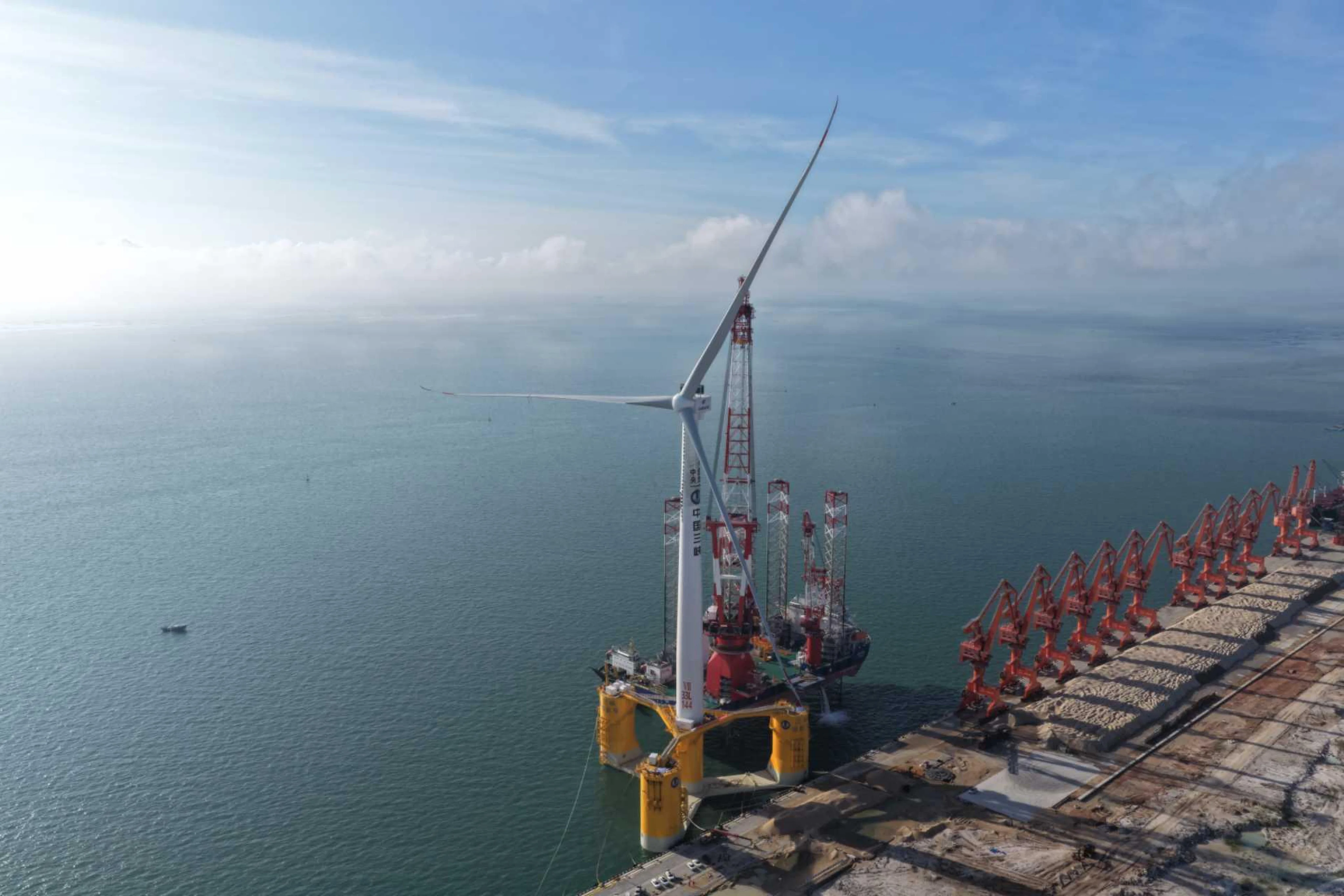By Mia Nurmamat
Copyright scmp

China has assembled the world’s largest single-unit floating offshore wind power system as it accelerates efforts to expand its marine economy and clean energy industry.
Assembly of the 16-megawatt system has been completed in Beihai, in South China’s Guangxi Zhuang autonomous region, Science and Technology Daily reported on Wednesday.
All of its key parts, from mooring cables and turbine gearboxes to ballast control systems, were produced domestically, the official newspaper of the Ministry of Science and Technology said.
The turbine’s rotor, with a diameter of 252 metres (almost 827 feet), covers an area the size of seven soccer pitches. Once operational, it is expected to generate about 44.7 million kilowatt-hours of electricity a year – enough to power over 4,000 average American homes.
The next step in the project will see the system towed offshore into waters deeper than 50 metres for installation and testing ahead of connection to the grid and commercial operation.
Mounted on a semi-submersible platform, the turbine is equipped with China’s first dynamic ballast system.
By pumping water in or out of tanks in its three columns, the platform can automatically adjust to shifting wind and wave conditions, reducing tilt and shutdown risks while improving efficiency, the newspaper reported.
The project is being led by China Three Gorges Corporation, the state-owned giant that built the world’s largest hydropower plant – the Three Gorges Dam – and is now the world’s biggest hydropower developer and operator.
The world’s first commercial floating offshore wind power system, with five turbines and a capacity of 30MW, began producing energy off the northeast coast of Scotland eight years ago.
Beijing has made offshore wind an increasingly important pillar of the country’s energy transition plans. During a high-level economic meeting in July, President Xi Jinping described it as a key sector in advancing the “high-quality development” of China’s marine economy.
The push comes as the country works to reduce its reliance on fossil fuels and reach carbon neutrality by 2060.
China added more than 4.4 gigawatts (GW) of offshore wind capacity in the first six months of this year, equalling the amount for all of last year, according to a report by Global Energy Monitor, a US-based NGO, in July.



